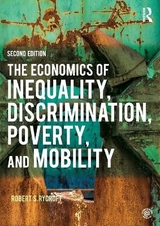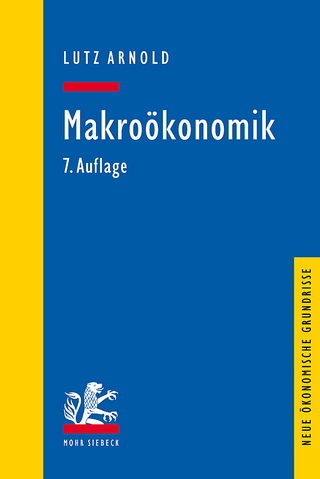
The Economics of Inequality, Discrimination, Poverty, and Mobility
M.E. Sharpe (Verlag)
978-0-7656-2327-0 (ISBN)
- Titel erscheint in neuer Auflage
- Artikel merken
Thoroughly classroom tested, this introductory-level text surveys what economists have to say about inequality (or income and wealth distribution), poverty, mobility - both intragenerational (within careers), and intergenerational (between generations) - and discrimination (on the basis of race, ethnicity, age, gender, and many other factors) in the United States. This text brings the undergraduate treatment of these issues up-to-date, featuring detailed, but not mathematical, examination of the economic theory underlying the analysis. There is a greater emphasis on mobility, on wealth accumulation, distribution and inheritance, and on discrimination law than in other texts. The author provides full and fair treatment of competing sides in several of the controversial issues in the field, written in such a way that instructors can use the text material to motivate a variety of classroom discussions. An Instructor's Manual featuring solutions to the end-of-chapter questions is available online to adoptors.
Within a few short months in 1997, Asian economies that had been considered not only healthy but "miraculous" suddenly fell off a precipice as investors withdrew massively first from Asian currencies and, in rapid order, from equity markets across the region. On October 27 1997, the turmoil in Asian markets spooked Wall Street in the largest single-day decline in history, a drop of 550 points. It was predicted that the Asian crash could drive the US trade deficit from $191 billion to $300 billion by 1998, creating huge new tensions in relations with some of the largest US trading partners. These wrenching changes, following a generation of success, raise numerous questions about the steps that led to the crisis, its likely outcome and the limits and constraints of "Asian capitalism". Edith Terry presents a blow-by-blow account of the crisis, beginning with the 1996 collapse of the Bangkok Bank of Commerce. In her overview, she links the fall of the Asian miracle with the theme of globalization, arguing that the crisis demonstrates the urgency of dismantling restraints to trade, investment, and financial services, and that the United States should take leadership in pushing for new and sweeping reform through the World Trade Organization and in bilateral negotiations with its trading partners. The final section of the book deals with the rise of the "Asian miracle" - how the myth was created, who created it, why it succeeded for so long - and is informed by analysis of the Japanese prototype.
| Erscheint lt. Verlag | 15.7.2009 |
|---|---|
| Zusatzinfo | Illustrations |
| Verlagsort | Armonk |
| Sprache | englisch |
| Maße | 152 x 229 mm |
| Gewicht | 680 g |
| Themenwelt | Wirtschaft ► Volkswirtschaftslehre |
| ISBN-10 | 0-7656-2327-7 / 0765623277 |
| ISBN-13 | 978-0-7656-2327-0 / 9780765623270 |
| Zustand | Neuware |
| Informationen gemäß Produktsicherheitsverordnung (GPSR) | |
| Haben Sie eine Frage zum Produkt? |
aus dem Bereich



